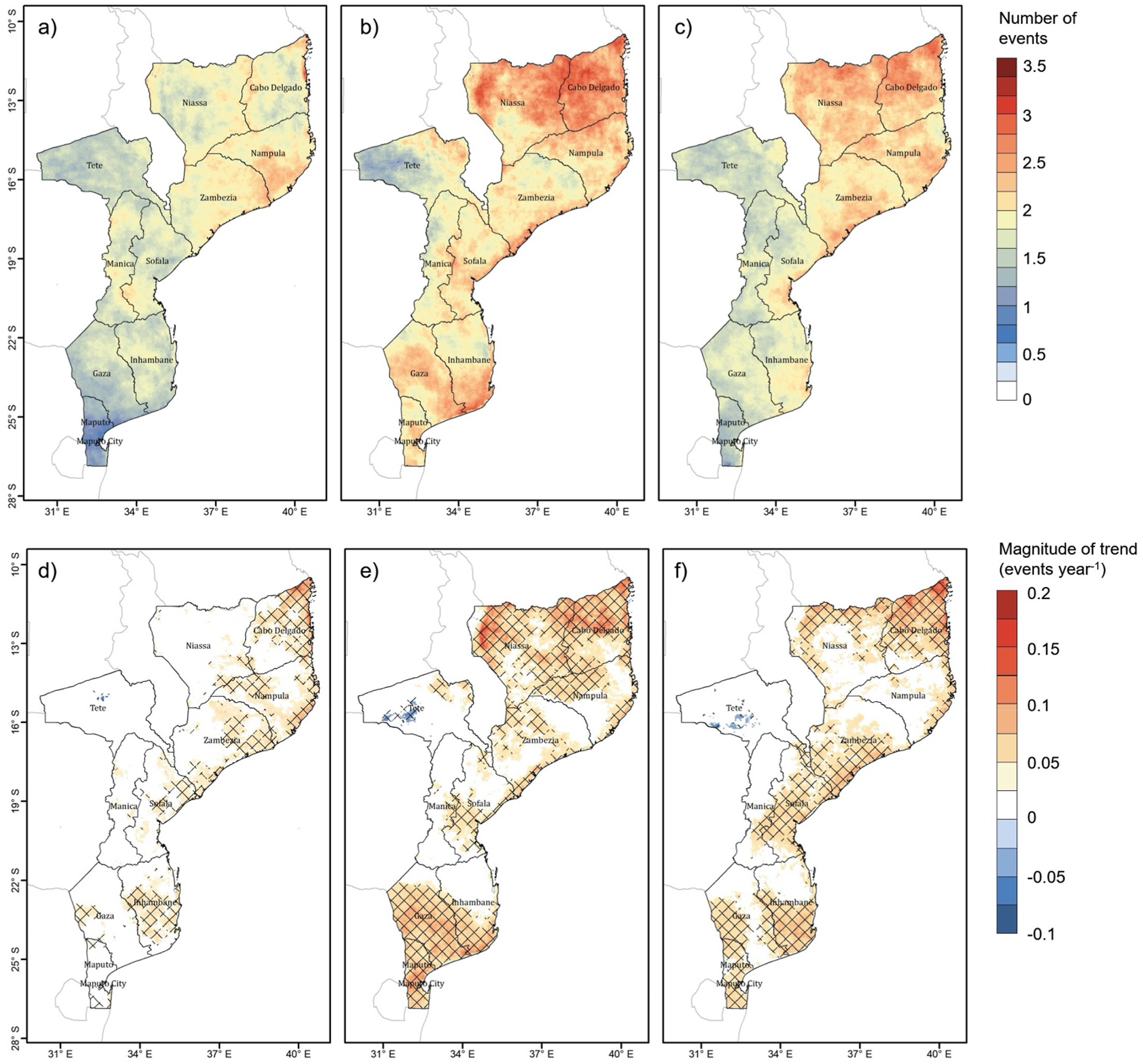Heatwaves in Mozambique (1983)–2016: Characteristics, trends and city-level summaries using high-resolution CHIRTS-daily.
The intensity, frequency, and duration of heatwaves are increasing worldwide. Still, heatwaves are systematically underreported and underresearched across the African continent. This study examines heatwaves across Mozambique, a country highly vulnerable to a variety of climate risks yet where heatwaves have received little to no attention. A spatio-temporal analysis was conducted for five heatwave characteristics (heatwave number, frequency, duration, amplitude, and magnitude) and corresponding trends from 1983 to 2016. This was done using the remotely sensed CHIRTS-daily, which presents one of the most accurate and highest resolution (5 × 5 km) daily temperature product currently available, especially for data-scarce regions. Three heatwave definitions were analyzed and compared, which are based on (1) the 90th percentile of daily maximum temperature (TX90), (2) the 90th percentile of daily minimum temperature (TN90), and (3) the Excess Heat Factor (EHF). Results were overlayed with high-resolution population data to obtain heatwave exposure and likely potential implications. Our findings show that Mozambique has experienced many heatwaves over the past decades. On average, 2–18.6 annual heatwave days (HWF) were recorded with the longest heatwaves (HWD) lasting X- 11.5 days. More and longer heatwaves were observed in the North and along the coast of Mozambique. Heatwave magnitude (HWM) ranged from 0.3 to 6.8 °C and amplitude (HWA) from 0.8 to 11.7 °C, with highest values in South and Central Mozambique. Heatwave events, days, and duration were found to be significantly increasing (p < 0.05) for many populated regions, yet trends for heatwave magnitude and amplitude were largely insignificant. A total of 13.6 million inhabitants (48% of the population) were found to be exposed to a significant increase in heatwave days, with most people exposed in Zambezia, followed by Nampula and Maputo province. City-level summaries of Maputo, Beira, Nampula, and Tete showed that these cities have been exposed to 50+ heatwave events since 1983. Overall, this study is one of the first to analyze historical heatwave events and trends on a high-resolution scale, both on country- and city-level scale, urgently required to increase awareness and spur action to reduce the current and future risk of extreme heat.
